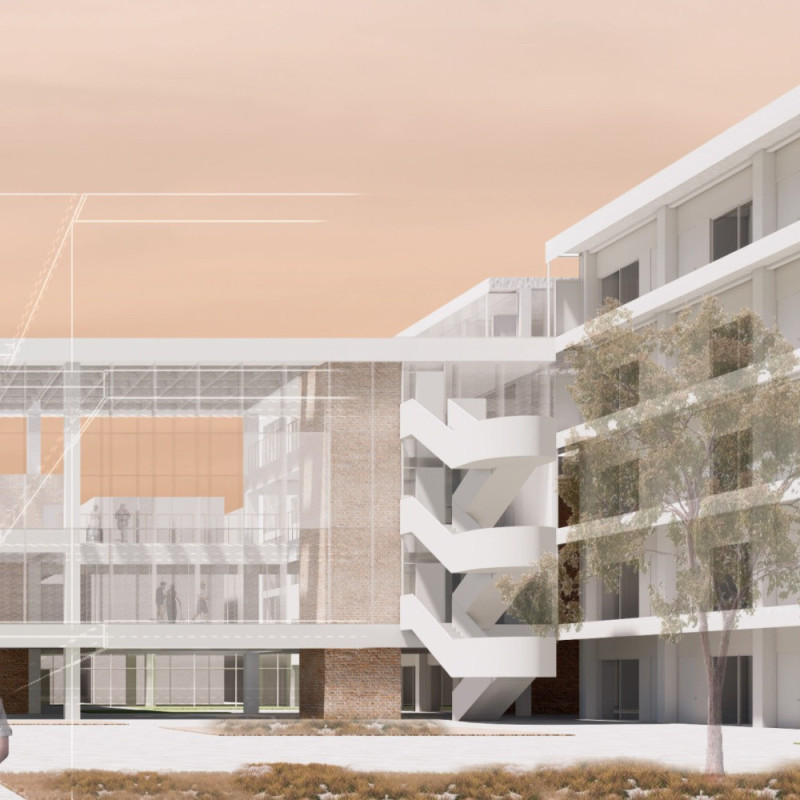5 key facts about this project
The architecture of [Project Name] reflects a harmonious dialogue between interior and exterior spaces. Large windows and strategically placed openings provide abundant natural light and offer picturesque views of the surroundings, creating a sense of connection with nature. The layout promotes an open-plan design, which enhances fluid movement throughout the space while fostering interaction among users. This thoughtful organization of spaces highlights the importance of social dynamics in architecture, encouraging collaboration and shared experiences.
Materiality plays a crucial role in the design of [Project Name]. The choice of materials is intentional, focusing on durability, aesthetic appeal, and sustainability. Concrete serves as a primary structural element, providing robustness and stability, while wood is employed for its warmth and tactile qualities, enhancing the comfort of the interior environment. Glass is used extensively in the façade, not only for its transparency but also as a means of bringing the natural landscape into the living spaces, allowing occupants to feel connected to their surroundings throughout the day.
One of the project’s unique design approaches is its emphasis on sustainability. [Project Name] integrates several eco-friendly technologies and strategies, such as [mention specific sustainable features like green roofs, rainwater harvesting systems, or solar energy systems]. These initiatives reflect a commitment to minimizing the environmental impact and aligning with modern ecological standards, showcasing how architecture can adapt to contemporary challenges while contributing positively to the environment.
The use of local materials also sets [Project Name] apart. By sourcing materials from nearby quarries and suppliers, the project not only reduces transportation emissions but also embraces the region's architectural heritage. This approach fosters a sense of place, ensuring that the building resonates with its cultural context and provides a meaningful connection to the community.
Details such as [mention distinctive architectural details, e.g., canopies, balconies, or unique rooflines] contribute to the overall identity of [Project Name]. These design elements are not merely aesthetic; they provide functional benefits such as shade, weather protection, and additional outdoor spaces for occupants to enjoy. The careful consideration of these components speaks to the thoroughness of the architectural process, where every aspect is designed to enhance both usability and experience.
[Project Name] invites exploration and encourages visitors to engage with its spaces dynamically. The project stands as a testament to the synthesis of architectural ideas that prioritize not only visual appeal but also practicality and community integration. The careful detailing and intentional design decisions made throughout the project exemplify the possibilities inherent in contemporary architecture.
For those interested in a deeper understanding of [Project Name], an exploration of the architectural plans, architectural sections, and architectural designs will provide further insights into the thoughtful decisions that shaped this project. This analysis highlights the fundamental aspects of the design and invites readers to appreciate the various layers of thought embedded within this architectural undertaking. Discovering more through the project presentation will offer a richer perspective on its comprehensive architectural narrative.


























